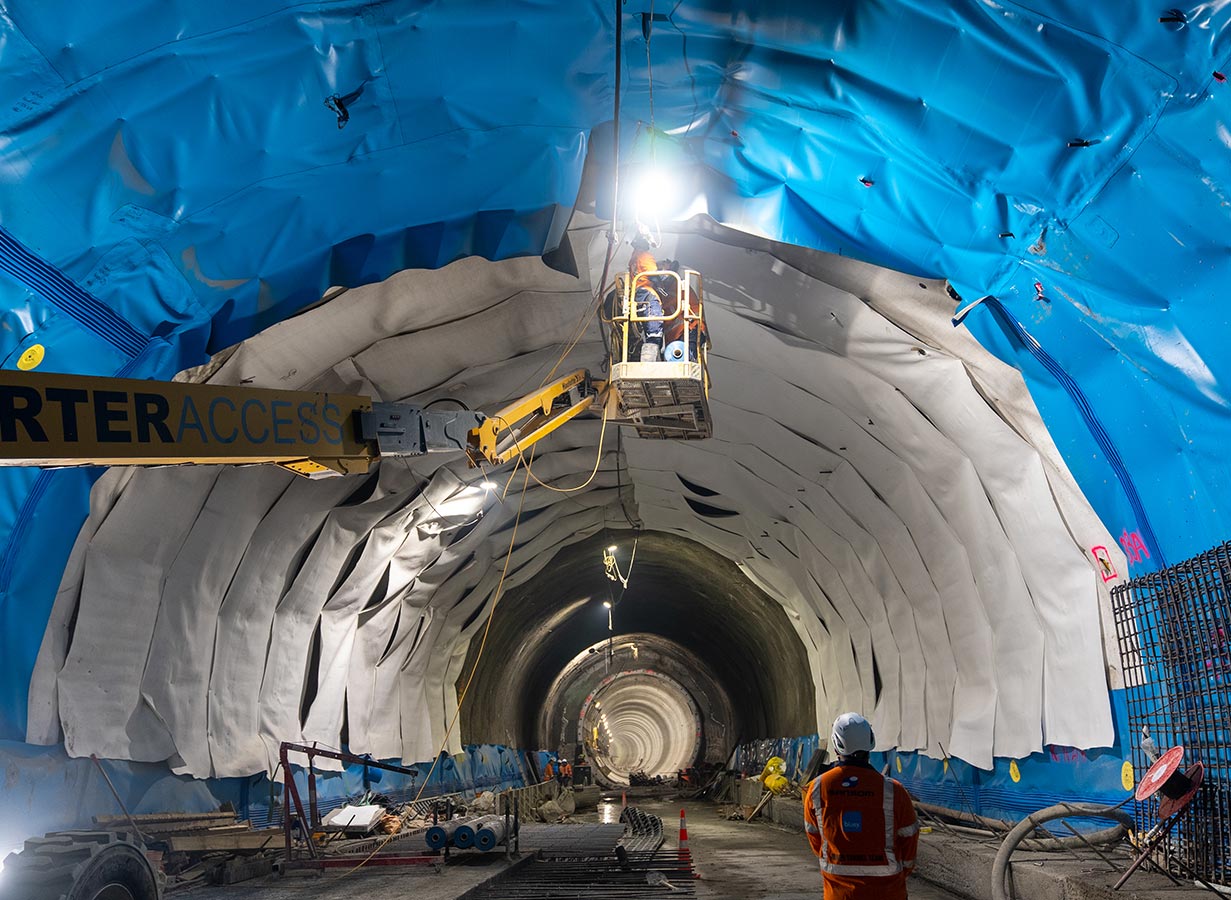By Louis Joubert, Project Manager
From initial assessment, it is easy to underestimate the severity and extent of repairs associated with degradation in reinforced concrete structures – including the time and cost required to extend the serviceability of a structure. In most cases, the same applies to structural upgrades or functional adjustments.
Inadequate assessments and remedial strategies inevitably lead to diminished performance but, more crucially, sometimes aid in making worse existing degradation.
Contributing factors in concrete remediation are not only limited to poor workmanship and environmental conditions, such as temperature and humidity, but also material selection and existing substrate conditions.
A specialist applicator takes all of these variances into account when planning remedial action and, to ensure each stage of a repair/upgrade project has been completed to specification, apply various Quality Assurance (QA) checks, tests and documentation before subsequent applications or works continue.
This process allows the early identification and mitigation of failure or defects and forms an integral part of both engineering and supplier warranties.
In summary, it is imperative that your selected contractor or applicator understands and enforces a robust Quality Assurance process.
The Consequences
A prime example of what happens when concrete repairs are done on the cheap is a large healthcare facility on the North Shore.
When reviewed, there was clear evidence that quality and cost hadn’t been balanced properly. Ultimately, the initial contractor’s work was deemed unacceptable, and a supplier’s warranty could not be obtained.
Sansom was brought in to remediate the situation. The existing works could not be salvaged and had to be removed – with the process kickstarted from scratch.
With no warranty, the facility had to pay for both the removal and new concrete repair application, on top of the original expenditure cost.
That’s a massive and unnecessary expense, not only in terms of budget, but also the impact on the usage of the facility.
Adequate QA and workmanship would have identified shortcomings to be addressed early on in the process and not allowed works to continue until completion.
This isn’t an isolated issue. We often find ourselves in a position where works conducted initially by third parties have to be rectified.
The Pre-Application and Application Process
Since there are so many factors that play a role in the success or failure of concrete and concrete repair work, a thorough quality assurance (QA) process is critical to make sure each stage of the job is correct and meets the required standard before moving on to the next part.
There are three main pre-application elements to be considered:
Compressive Strength of Existing Substrates
This provides a measure of whether the existing concrete substrate is suitable for repairing or coating applications. Destructive and non-destructive tests are performed. Either core samples are extracted and crushed in the lab, or indicative Schmidt (Rebound) Hammer readings are obtained and converted to specific MPa readings.
Tensile Strength of Existing Substrates
Tensile testing uses specialised machinery, bonding small dollies to the concrete surface, allowing them to cure, and then pulling them off. This helps to ensure the concrete meets the required specifications from suppliers, clients, or engineers before application.
Substrate Moisture Content
Typically, epoxies require less than 4% moisture content, while water-based epoxy coatings can tolerate up to 6%. Primers can be adjusted to counteract substrate moisture issues, providing some flexibility.
Sansom use propriety non-destructive moisture meters to determine the moisture content within concrete substrates.
However, even with acceptable moisture content, failures can occur due to rising moisture from beneath or within the concrete. There are some measures that can be implemented to counteract these conditions, and each scenario has to be evaluated separately. A good measure is to apply a plastic sheet test before any coating is applied to a substrate.
Once these substrate pre-tests are completed, the project can move forward with the subsequent application process.
Standard quality assurance continues throughout the application phase, tracking batch numbers and monitoring environmental conditions. Measuring humidity and temperature is crucial, with most products performing poorly below five degrees Celsius.
In cases where delamination or blooming (when moisture, from humidity in the air and/or moisture from the substrate, causes water-soluble compounds to migrate from the body of the coating to the coating surface, leaving oily, waxy and/or sticky deposits as leached components after moisture evaporation) occurs, suppliers often require grinding off the affected area and a re-application.
The Importance of Termination Details
Termination details refer to the areas where concrete meets other surfaces, such as steps, walls, skirting, planter boxes, pipes etc., going through walls.
Most concrete repairs and coating experts recognise the importance of termination details and that they are critical points where leaks are most likely to occur if not done properly.
However, the time spent on termination details is frequently underestimated. Termination details will, in most cases, utilise the same time and labour resource equivalent to the main coating application itself.
Unfortunately, termination details are rarely included in project timelines and costings. While contractors spend considerable time on official surface preparation like grinding and scabbling, they can often end up spending twice as long on a coating application due to the time required for termination details.
In most cases, termination details are comprised of different materials. Interaction of these materials in terms of their compatibility and sequence of application, based on Technical Data Sheets, are critical. Depending on material selection, it is important to consider costs and possible lead time in material procurement. In all cases, it is very important to not only follow the project specification but also value the technical input of the material suppliers.
The consequences of not properly addressing termination details include risks such as leaking – which are likely to occur at these intersections – proving both costly and time-consuming.
Sansom’s Ongoing Commitment
Overall, when it comes to concrete repairs and coatings, it is so important to have the job done well the first time.
If the end product fails, then, most of the time, the only option is to tear it out and do it again – which can be extremely costly and disruptive to your project’s timeline.
There is a lot that goes into any concrete repair or coatings project and it requires a realistic timeframe and budget, which takes into account the importance of termination details and is backed by a strong QA process.
QA picks up any issues that can be dealt with before the project is too far advanced and ensures the application meets the material supplier’s standards for warranties.
At Sansom, QA is a critical part of all our concrete repairs and coatings work (including our tanking, roofing and façade waterproofing divisions) and it enables us to deliver a solution that works and is warrantable. With a strong reputation and backing of executed works, Sansom has a no questions asked approach to rectifying defects – not only during but also post application of products.
Sansom, with more than four decades of experience, is armed with a high degree of technical expertise and knowledge within the Concrete Repairs Division, which comprises skilled artisans in coatings, structural strengthening, injection, concrete repairs, grouting, screeding and FRP works.
Get in touch to start the conversation about your next concrete repairs project.




